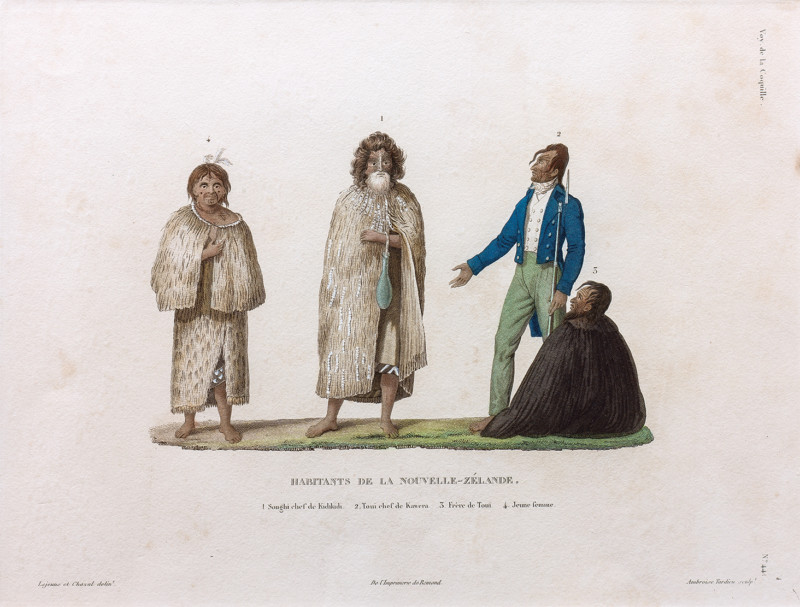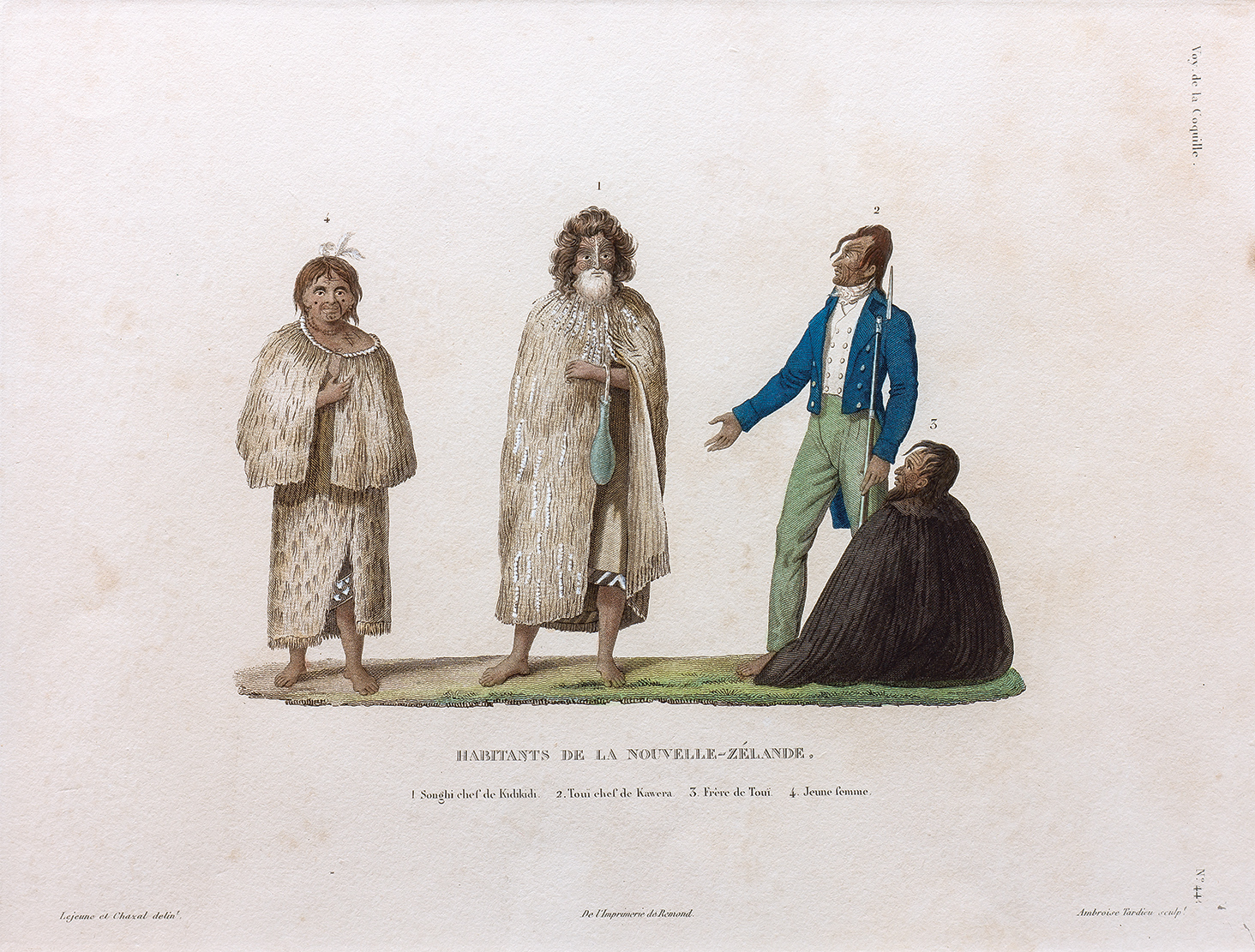LEJEUNE, Jules Louis; CHAZAL, Antoine;
Inhabitants of New Zealand: Young Woman, Hongi, Chief of Kerikeri, Tuai, Chief of Kahuwera, and Brother of Tuai
1826
Hand-coloured engraving on paper
340 x 555mm

Original title: ‘Habitants de la Nouvelle-Zélande: 1. Songhi chef de Kidikidi, 2. Touï chef de Kawera, 3. Frère de Touï, 4. Jeune femme’. Engraved by Ambroise Tardieu. Plate No. 44 from Louis Isidore Duperrey, Voyage autour du monde, exécuté par ordre du roi, sur la corvette de Sa Majesté, la Coquille, pendant les années 1822, 1823, 1824, et 1825 (Paris: Arthus Bertrand, 1826). Other lithographs from the series can be viewed here.
The following text comes from the catalogue for the exhibition Tirohanga Whānui.
Here the artists have treated these inhabitants of a strange country in much the same way as botanical specimens might be; arranged, numbered and titled. In Lejeune’s original the three male figures are drawn closer together, gesticulating as though in lively conversation. In the engraving only Tuai (or Tuhi) gestures, somewhat stiffly.
Hongi Hika visited the Coquille two days after the ship arrived in the Bay of Islands. His escort performed a haka, the first the ship’s crew had ever experienced, which thoroughly terrified them. Lesson described in some detail how Hongi had won the approbation of the first missionaries by feigned gentleness and studied courtesy; how he was taken to England by Thomas Kendall but turned against him following the Church Missionary Society’s failure to provide him with powder and muskets: ‘Warlike and fierce he thirsted to extend the field of his domination and gave himself with all the energy of his savage passions to this instinct for the perpetual warfare waged among the different tribes.’
Tuai, again in European dress and fluent in conversational English, was one of Hongi’s allies during some of the wars however he was described by Lesson as a mediocre warrior, not much thought of outside his own pā. His elder brother Korokoro, Hongi’s equal and rival in bravery, had died while Tuai was in England. Tuai only succeeded him because a second brother had been killed at Pāroa in the interim. Tuai himself died only six months after the Coquille left.
The fourth brother, Te Rangi, represented here cloaked and seated was, according to Lesson, ‘a rather insignificant personage who was nevertheless respected for his family background, as his ancestors had been arikis or high priests’. Apparently, he rarely left the Coquille, preferring to remain on board to supervise the prostitution of enslaved women in exchange for gunpowder and axes.
The unknown young woman in a woven flax cape and tagged skirt was in some versions of this engraving said to have been eighteen years old.
Exhibition History
Tirohanga Whānui: Views from the Past, Te Kōngahu Museum of Waitangi, 15 April to 15 September 2017

